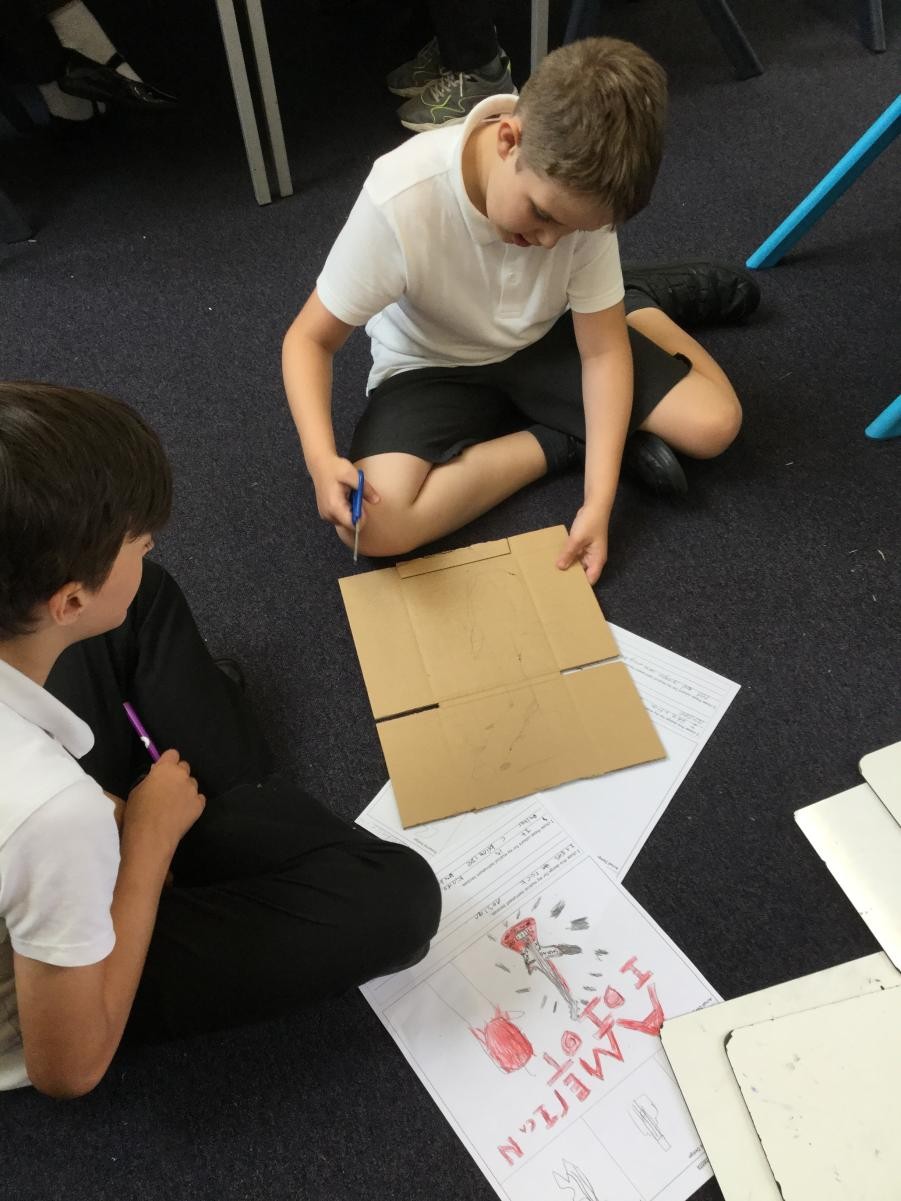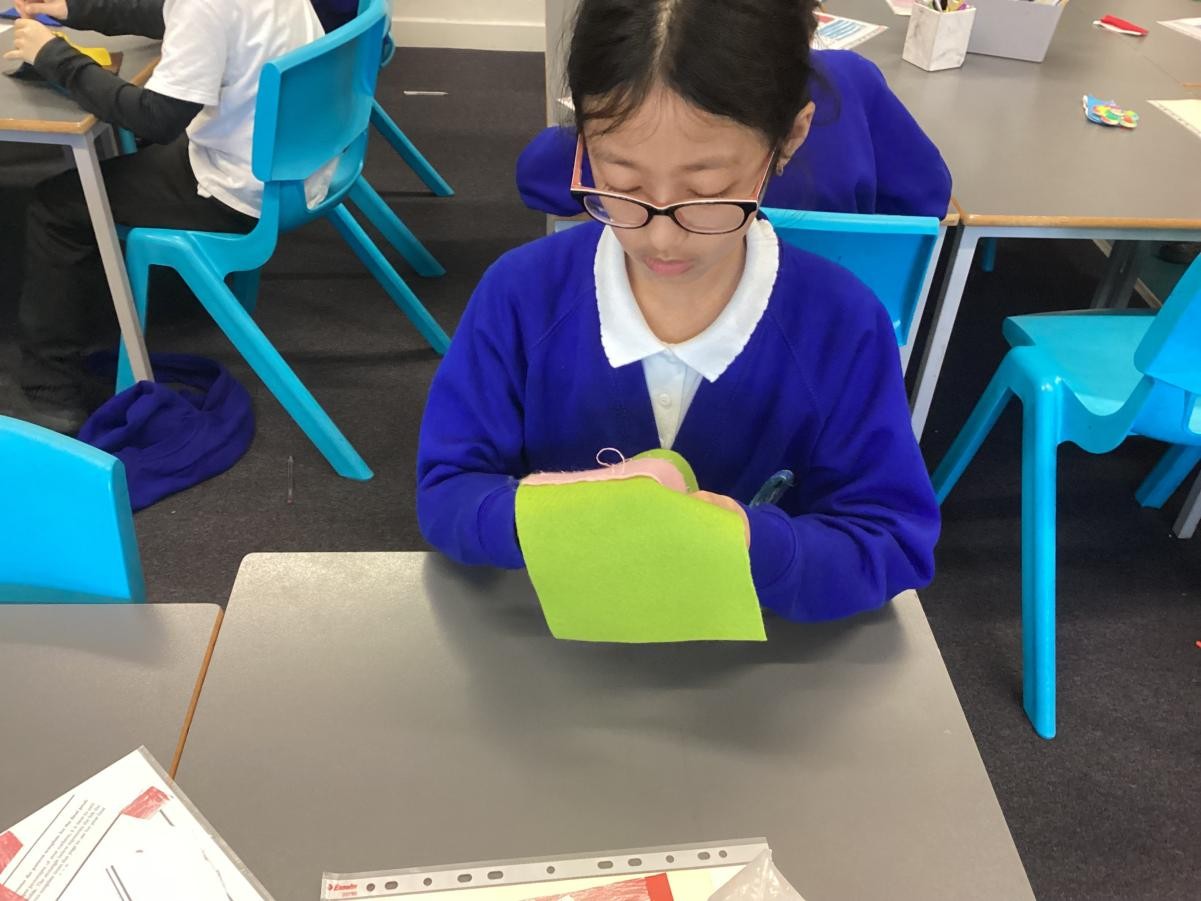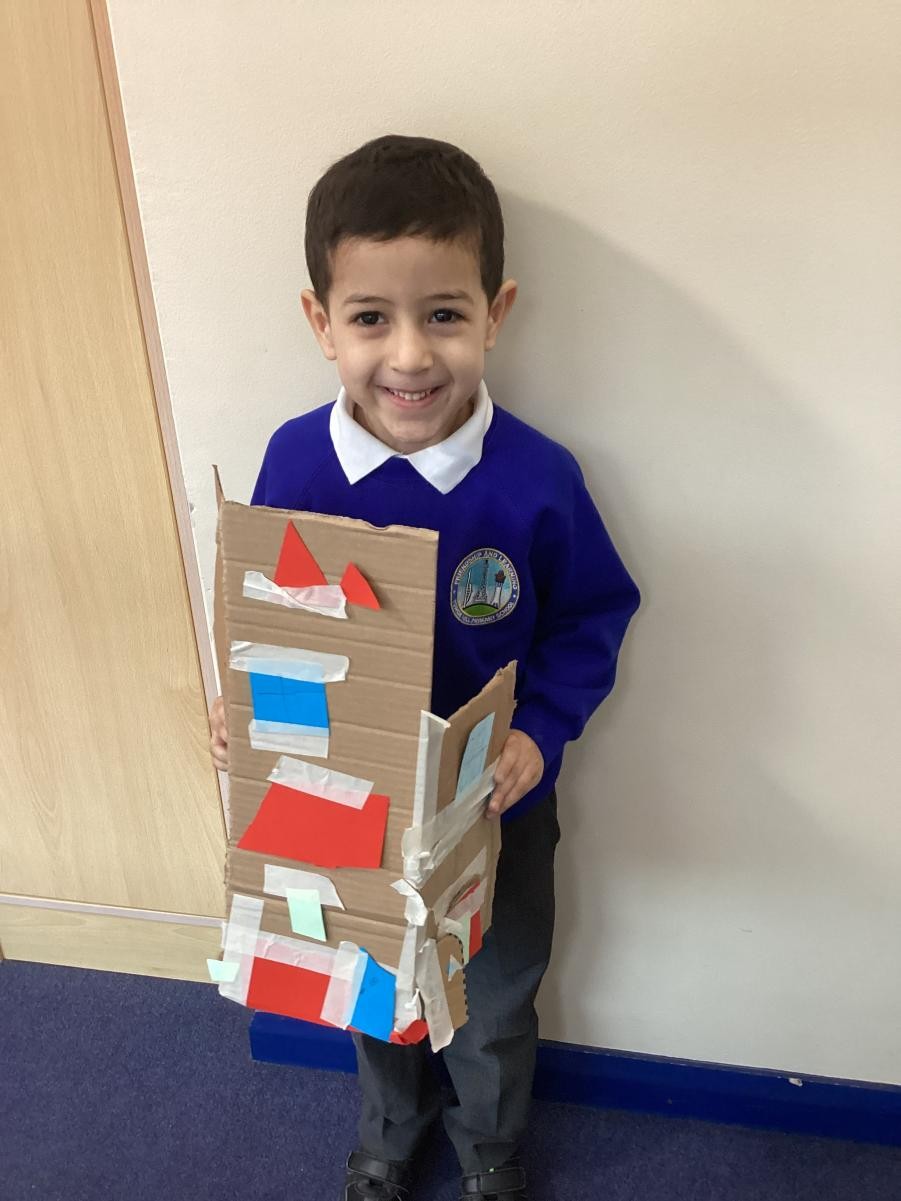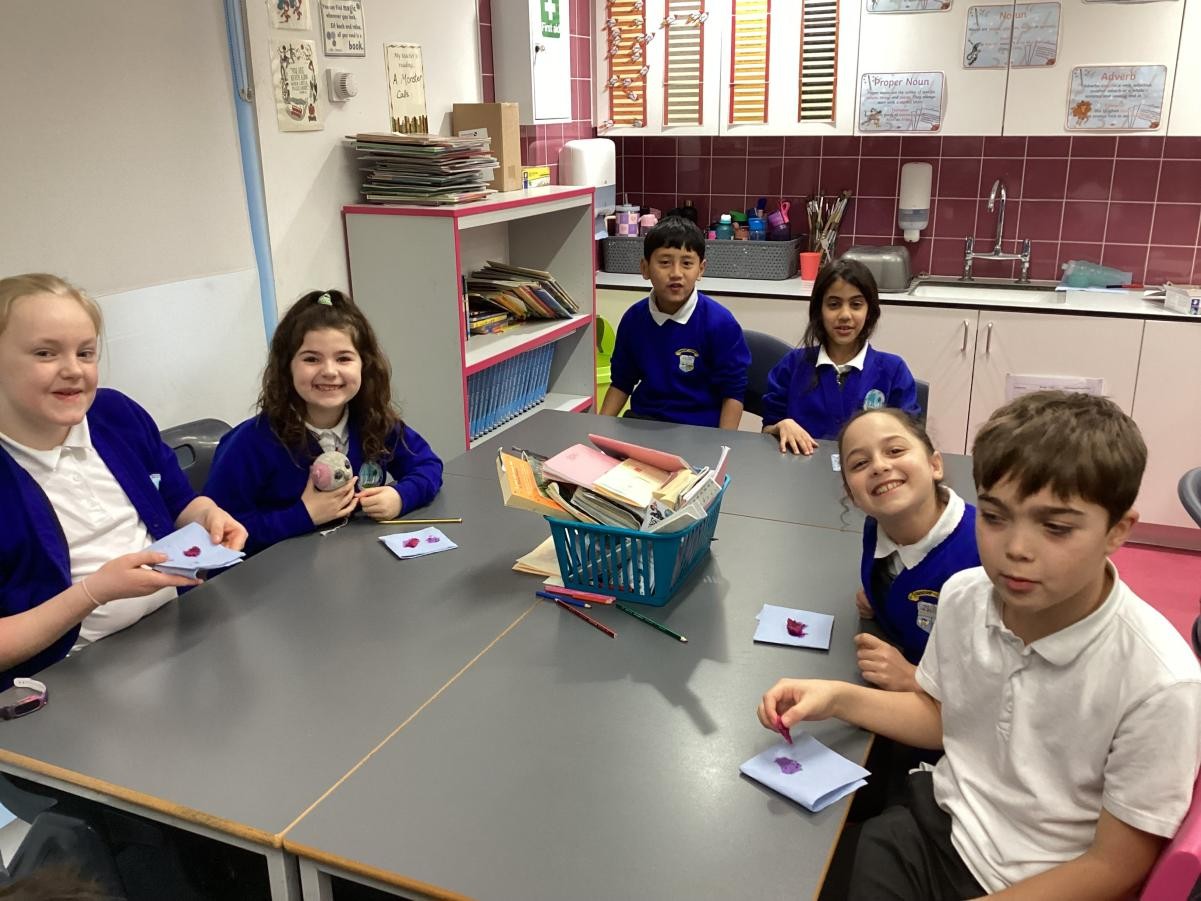Design Technology and Food and Nutrition Rationale
Intent:
At Tower Hill Primary School our core vision is that ALL children will be equipped with the skills, knowledge, understanding and empathy that will lead to them being able to make their own choices in life, successfully. The intent of our Design and Technology curriculum is to give the children the opportunity to learn to think, and intervene creatively to solve problems, both as an individual and as part of a team.
We believe the learning of Design and Technology develops the creative, technical and practical expertise needed to perform everyday tasks confidently, allowing children to participate successfully in life, using the knowledge they are equipped with to make the right choices; in an increasingly technological world. This is directed to all children including SEN and disadvantaged, irrespective of their background and ability, following the policy ‘no ceiling to learning and achievement’. The teaching of Design and Technology should provide children with the confidence to use their repertoire of knowledge, understanding and skills, in order to design and make high-quality prototypes and products for a wide range of users. Design and Technology at Tower Hill, should provide children with the key skills of critique, evaluation and testing ideas, equipping them to transfer successfully to Key Stage 3.
Implementation:
At Tower Hill, our Design and Technology Curriculum is coherently planned and sequenced towards all children (including those classified Disadvantaged or with SEND) to develop and build sufficient knowledge and skills for future learning. Through Tower Hill’s Design and Technology Curriculum, children will develop the key skills and knowledge for each unit. These skills will build on sequentially from each other from Early Years to KSI and KSII for the specific outcomes expected. Children should see and make the connections to their learning in Mathematics, Science, Literacy, Computing, Art and other curriculum areas, using written and spoken language.
Early Years Foundation Stage:
The Early Learning Goal for exploring Creating with Materials states that children will:
Safely use and explore a variety of materials, tools and techniques, experimenting with colour, design, texture, form and function.
Share their creations, explaining the process they have used.
Make use of props and materials when role playing characters in narratives and stories.
In EYFS the children are given a variety of opportunities to self-select and explore different tools and materials. They are encouraged to experiment with how to join materials and represent their ideas, including using junk modelling and craft activities. This is provided through child initiated time and are assessed through observations.
In EYFS the children are given opportunities to select their own fruit from the snack area this is to encourage them to make healthy snack choices. This then moves onto them designing and making a rainbow salad to continue to build the foundations of the importance of making good nutritional choices.
Key Stage I:
The National Curriculum states that in KSI: Through a variety of creative and practical activities, pupils should be taught the knowledge, understanding and skills needed to engage in an iterative process of designing and making. They should work in a range of relevant contexts.
- In the project of ‘Moving Pictures’, Year 1 are introduced to tools and equipment to perform practical tasks, such as cutting, folding and sticking. Additionally, they are beginning to explore mechanisms, such as sliders.
- Year 1 select a range of materials and components to construct a suitable house, looking at the materials characteristics, when building a house for The Three Little Pigs in the project, ‘Construction of Homes’. Children are given the opportunity to begin communicating their ideas and drawing designs and templates. This is developed further in Year 2.
- Through the ‘Sunny’s Vehicle’ project in Year 2, children are able to generate ideas to design an appealing and purposeful vehicle for Sunny from the book ‘Meerkat Mail’ to visit further places. They then use this information to communicate ideas in groups to plan and draw designs. Once their equipment and its structure is built, the opportunity to evaluate their design for its purpose, against their design, is given. This will lead to the discussion on how it can be made more stable.
- The ‘Puppets’ project in Year 2 allows the children to use and develop their design skills and techniques using a range of materials and textiles. Children will begin developing the skill and technique of sewing that will be later developed in Key Stage II.
- Throughout KSI, children are instilled with a love of cooking. This is shown when making fruit smoothies in Year 1 and healthy wraps in Year 2. This builds the fundamental foundation for this crucial life skill of cooking and nutrition. Additionally, children are continuously reminded of the importance of health and safety, as well as hygiene, both when preparing and cooking their own food, and before eating.
The National Curriculum states that in KSII: Through a variety of creative and practical activities, pupils should be taught the knowledge, understanding and skills needed to engage in an iterative process of designing and making. They should work in a range of relevant contexts (the home, school, leisure, culture, enterprise, industry and the wider environment).
- Through the unit ‘Shadufs’ in Year 3, children are given the opportunity to research, investigate and analyse the design of the mechanism, levers. This allows them to select the right tools and equipment to perform the practical task of cutting and joining to create the mechanism. These skills will prepare them for Year 5, when they create cams.
- Year 3 and 4 are given the opportunity to continue and develop the skill of evaluating their work within the topics, ‘Photo Frames’ and ‘Carousels’. During their evaluation task, against their design criteria, they are given the opportunity to apply their understanding to strengthen, stiffen and reinforce their joins and constructions.
- The opportunity to select a wide range of materials and components are given throughout KSII, for children to practise their practical skills. During Year 4, children are able to develop their cutting and finishing skills when creating a ‘Pop Up Book’ for a specific researched group of people. The sewing skills and textile work is further grown and enhanced within Year 4 and 5 when making ‘Anglo Saxon broach’ and ‘Felt Pillows’ for the topic European Flags. The children will consider the properties of the pillow and the aesthetic qualities.
- When planning, across the Key Stage, children will create prototypes and annotated sketches to inform their making process. These include cams, carousels, bridges, sandals and shadufs. This is often done through discussion and communication in pairs or small groups.
- In Year 6, children are able to look and understand how individuals and groups of people have helped shape the world with their designs and inventions. This takes place when completing the unit, ‘Ancient Greek Sandals’.
- Children’s love for cooking continues to grow throughout KSII.
Children research a range of ingredients that can be included in one dish. For example, when completing the topic of ‘Vegetable Chow Mein’.
- There are a range of savoury dishes created in KSII, such as ‘vegetable chow mein’ in Year 3, ‘vegetable bolognese’ in Year 5 and as part of creating a ‘three course meal’ in Year 6. However, sweet dishes are also included in the curriculum, such as, ‘fruit crumble’ in year 4. This is to help support and develop children’s understanding of a broad and balanced diet. Throughout each lesson, the understanding of the basic principles of a healthy and varied diet is reinforced.
Impact:
In Design and Technology, we assess the impact of the curriculum on our learners in a number of ways. Firstly, we strive to ensure that our children’s skills and knowledge, linking directly to the National Curriculum, is developed and built on throughout Early Years, KSI and KSII, and at times across the two Key Stages. Children should be able to talk about and discuss their learning, linking it to their prior learning. For this to happen, end outcomes are shared with the children, as well as the steps and the skills developed on this learning journey. This will lead to a sequence of lesson that include; research, practise, plan and design, make and the inclusion of technical knowledge within all these aspects. Following each unit, children are given the time and guidance needed to evaluate their work, against their design criteria. We encourage and promote independence and resilience in order that children can take control of their learning. Teachers will use end point, assessment tasks and whole class feedback sheets to assess the children’s progress across each unit of DT.
Golden Thread:
Throughout the children’s DT journey, the children will build on their prior knowledge, acquire a broad range of subject knowledge and skills in order to research, design, make and evaluate their work. They will develop a critical understanding of how products work, understand how to critique to improve their work and learn how products can be designed and created for the wider world.
In our DT lessons at Tower Hill, it is imperative that we continue to build and develop children’s aspirations for life. We aim to achieve this through introducing all children to careers, each one being linked to a unit of work. At the start of each unit, children will spend time looking at and learning about the linked career as an introduction to their unit, therefore improving their understanding of how DT can help and support their future. This will provide children with the knowledge of careers that they may not have come across in their lives thus far. Additionally, we aim to provide them with more options and understanding in an ever growing technological world. Where possible, we encourage and seek out opportunities for children to experience elements of these industries from professionals or individuals in the local community furthering their education within the industry. Through doing this, we hope to introduce them to a wealth of opportunities. It is our objective to inspire and equip the children with a repertoire of knowledge of a wide variety careers outside of their immediate world.

















































